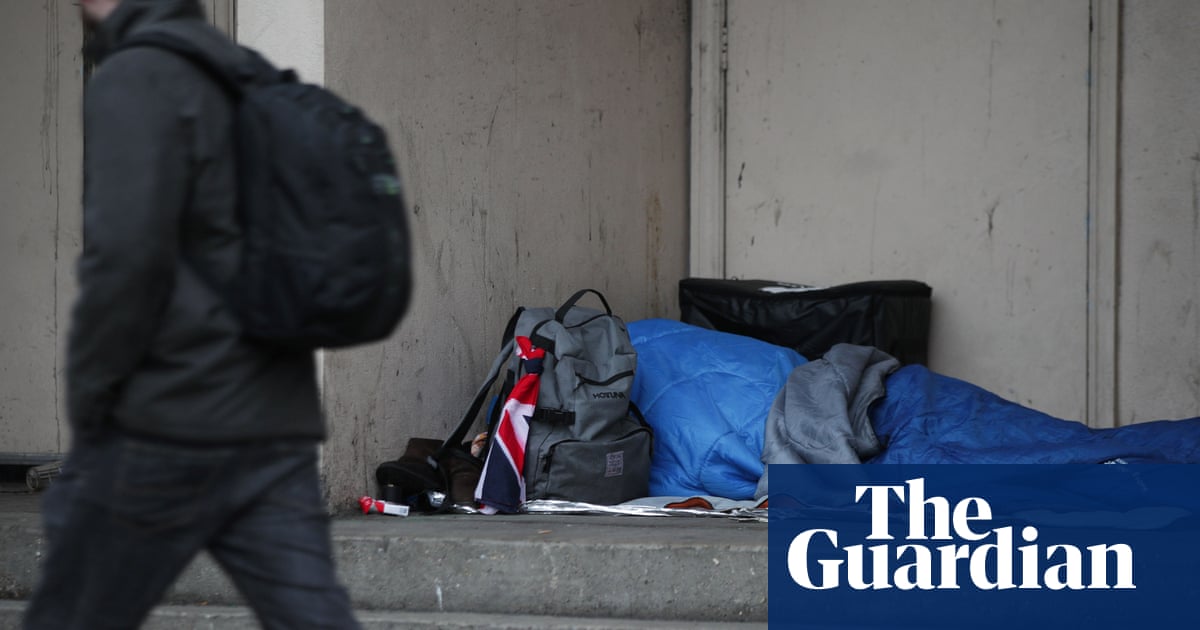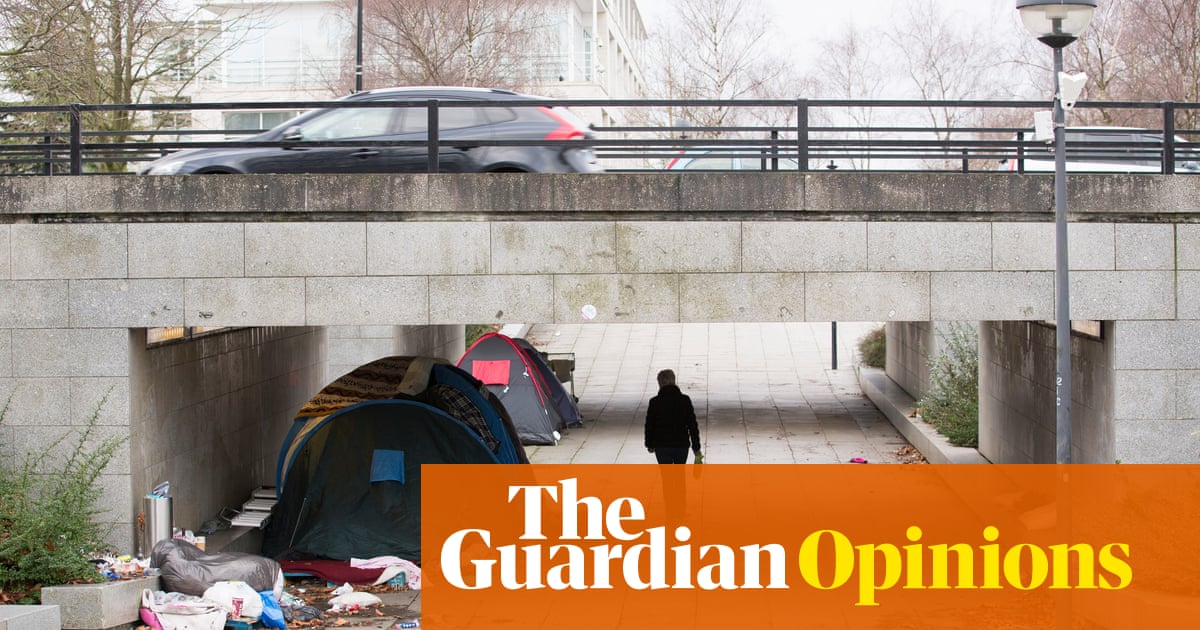
Growing numbers of women are reporting as homeless in England as figures show rough sleeping in London has risen by 35% in five years.
More than 11,000 people were counted sleeping rough in the capital from April 2020 to March 2021, a 3% increase on the previous year, despite the push to get “everyone in” last spring. The homelessness charity Crisis described the figures as “dreadful” and said it showed progress resulting from the push to house people in hotels at the start of the pandemic was “in imminent danger of being lost”.
After plateauing between 2014 and 2017, rough sleeping has been rising sharply since. The number of people counted sleeping in parks, doorways and other places not designated was almost double the number in 2011. The figures are commissioned by the Greater London Authority and are considered the UK’s most comprehensive data about rough sleeping.
Charities said the figures showed the battle against rough sleeping was at “a precipice”, with last month’s lifting of the eviction ban, the winding down of furlough and a chronic shortage of affordable housing all increasing the threat.
They also warned of a hidden crisis of women sleeping rough, with job losses in the hospitality sector and increasing domestic violence during the pandemic fuelling the surge. The homelessness charity Glass Door said that between 2020 and 2021, 26% of those it supported were women, up from 19% in 2018-19. New Horizon Youth Centre in London found that between April and June this year 35% of its guests were female, comparedwith 10% in 2019.
St Basils, a charity in the West Midlands, found 35% of those using services under the Everyone In scheme were young women.
Official rough sleeping statistics for England released in February show just 14% of rough sleepers were women and the new figures for London show 16% were women.
Outreach workers fear women are not being included in official rough sleeping statistics because they often go inside when the counts are happening, seeking shelter on buses or staying in A&E departments for safety.
The latest rough sleeping figures for London suggest the widely praised initiative to get people off the street was overwhelmed by new rough sleepers. Councils said more than 5,000 people were accommodated at the peak of the Everyone In initiative but the number of people bedding down in London for the first time had increased on the previous year.
“The Everyone In programme has been a huge success,” said Rick Henderson, the chief executive at the national homelessness membership charity Homeless Link. “But, by design, it was an emergency measure. Today’s news that over 7,500 people experienced sleeping rough in the capital for the first time in the past year shows that, for the government to meet its target of ending rough sleeping by 2024, it must start to address the root causes of homelessness too.”
Jon Sparkes, the chief executive of Crisis, said: “It’s dreadful to see an increase in the numbers of people sleeping on our streets … in the past decade rough sleeping numbers have increased by a shocking 94%. There is nothing inevitable about this.”
Gemma Thapermall, a senior caseworker at Glass Door, said job loss was a key cause of homelessness for women but “when I start supporting these women I always notice there is something more going on”.
She said: “They may have come to the services with problems such as losing a job but other issues in their lives will soon become apparent, such as domestic abuse.”
Marike van Harskamp, from New Horizon, said men and women “negotiate street homelessness quite differently”, with women often not staying visible at night, meaning they do not appear in the data.
One woman helped by Glass Door, who asked to remain anonymous, moved to the UK two years ago from Romania and had been the victim of modern slavery when she first arrived. As her English improved she realised she was being exploited and got a job elsewhere as a waitress. However, she lost this job amid the pandemic and could not find anywhere to rent. She left one property due to threats of violence and ended up sleeping rough.
She eventually received support from the charity and was able to get universal credit but said she found the experience “psychologically and physically very hard”.
“After living on the streets, I never in my life want to go back to that. I don’t want to sleep on the streets again even for a night,” she said.
Van Harskamp said New Horizon thought it was seeing more women due to increased levels of domestic violence during the pandemic. “Where young women are normally resourceful in finding informal arrangements with friends they found it harder during Covid, so instead presented at services,” she said.
“A third factor is that young women in normal times may be able to get early support, or it would be identified in college or via youth services, but these services closed due to coronavirus.”












